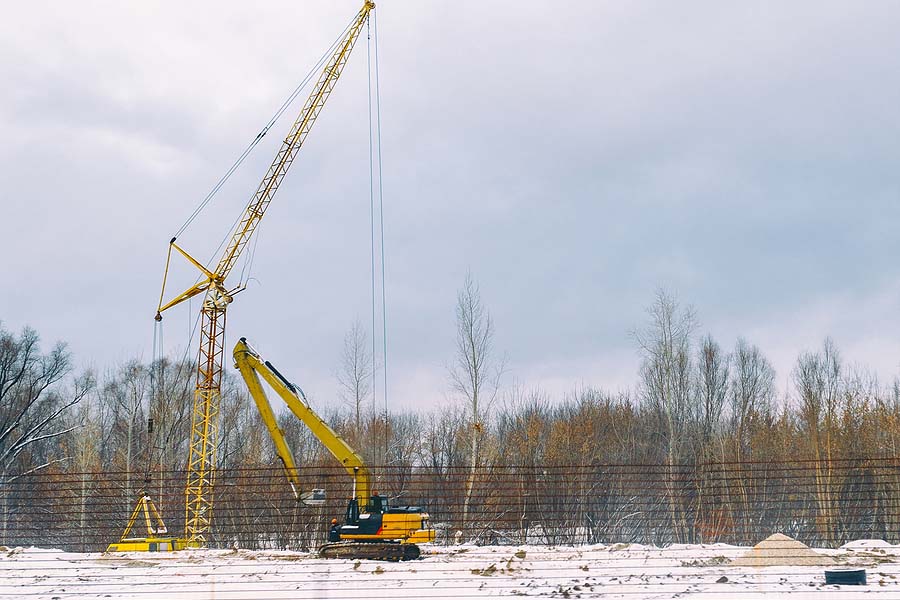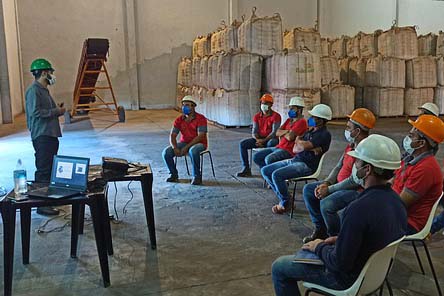3 Opportunities During Construction's Slow Season

Not all industries or locations go through busy/slow cycles, but if you’re a construction company in the part of the country – or world – where the seasons change drastically, you’ve probably come to expect some slow-downs at the end of the year. Whether due to weather events, ground temperatures, or budgets waiting to be approved and released, slow times can leave many people sitting idle. This is clearly not the best use of that time, but what should you be doing? And what about the people who do continue to work through projects that are on autopilot or that are working with skeleton crews? Are there special considerations to take for those workers?
Fighting Complacency
Let’s start with the people who continue to go to work in the cold – the workers who leave the house before the sun has come up and get home after the sun has gone down. Motivation is going to be a big part of what you need to focus on for these workers. Even people who don’t suffer from seasonal affective disorder can experience the doldrums of winter and this can lead to dangerous actions or conditions on a job site.
Check in on these people often. See how the workforce is doing. Keep them productive. Make sure they remain focused on safety. One of safety’s biggest enemies is complacency and complacency is borne of boredom and lack of motivation. Make sure you continue having safety meetings. It’s easy to fall into the trap of, “Well, there are only a few guys out here, why bother?” Keep safety at the forefront. Remind them of how easy it would be to end up in the hospital, or worse, for the holidays. Make sure supervisors are observing their workers. Does somebody seem “off”? Depressed? Under the influence? All of these do come with the shorter days. Encourage your employees to talk to you if they don’t feel right. You could make a huge impact in their lives without even knowing it by simply lending an ear.
A Great Time for Training
Remember all that training you’ve been putting off all year because you couldn’t afford to take your workers off the job site? It’s still as important today as it was then. Maybe the slow time is the perfect time to get this done. Training can break up the routine, helping to avoid the complacency we discussed earlier. It can serve as a day to get the crews out of the elements. It will boost their safety knowledge and help keep safety at the front of their minds.

If you have the capability of doing training in-house, that’s great. Make sure you’re picking topics that are relevant and necessary – ones that are either required by regulation or are going to help to keep your workforce safe. Don’t just stay in the wheelhouse of your in-house safety trainer if they’re not an expert in what you need. For instance, NFPA 70e training could be a highly specialized course that you’d want a properly qualified person to perform. Your safety trainer, who may be great at excavations or fall protection, or even general electrical safety may not have the necessary skill set to train to NFPA 70e.
You want to make sure the trainer is both effective and accurate and, if those costs a few more dollars, it’s well worth the investment. If you can’t handle the training in-house, don’t delay. Your slow season is the slow season for many other companies who may have the same thought. If you wait too long, you could find yourself unable to schedule a trainer. Figure out your training needs early and get everything on the schedule so you can plan around it.
Good Time to Evaluate
Your safety program is not a static program, it’s a dynamic program. This means that it must be constantly reviewed and updated. Did your company venture into a new arena this year that is not reflected anywhere in your health and safety program (HASP)? Did OSHA or your local regulatory agency make any updates or additions that you need to address? Did you review your procedures, such as Lockout/Tagout to determine how effective they were (which you should be doing as part of the program)? Any of these things can lead to significant changes being needed for your HASP.
While this shouldn’t be the only time this happens (you may have urgent needs for updates throughout the year), this is a great time to do a thorough, in-depth review. It could be a good time to have an outside safety consultant review your program to see if there is anything missing. It’s a great time to make sure you’re getting feedback from your own people to see if they have any thoughts on what is working and what isn’t. And, if you do make any changes, remember to add it to the training you’re conducting in the slow season. You can’t expect your workforce to abide by your updated safety plan if you haven’t trained them in it. By the time work picks up, you could have everything updated and implemented.
Conclusion
Yes, things could slow down in the winter (or, insert whatever time of year happens to be slow for your industry/location), but it doesn’t mean work stops and it doesn’t mean progress stops. This is the time to tie up all the loose ends that nag at you all year long. It’s extremely tempting to just sit back and catch your breath during the slow period, but if you do that before you know it, you’ll be back in the thick of things saying, “I don’t have the time right now” to all of the things you could have taken care of. Don’t waste the opportunity.
